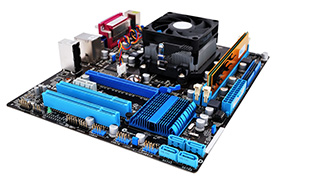Heat resistance
SunForce™ (modified polyphenylene ether) is inherently a heat resistant material.

※Image is for illustration purposes
Ratio of shrinkage with temperature
Ratio of shrinkage with temperature is a value that indicates the degree to which a material shrinks when placed under high temperature without a load applied. Please check the material properties table for measured data.
Long-term stability
Long-term stability is a measurement of how much a material's strength changes when exposed to heat over a long period of time. This is an index for predicting changes in the physical properties of a material over time. It is particularly useful when designing products or parts that are intended for long-term use. In general, the physical properties of plastics change with age, but the higher the temperature at which they are used, the more greatly their properties deteriorate. For further information, please contact us (inquiries here).
